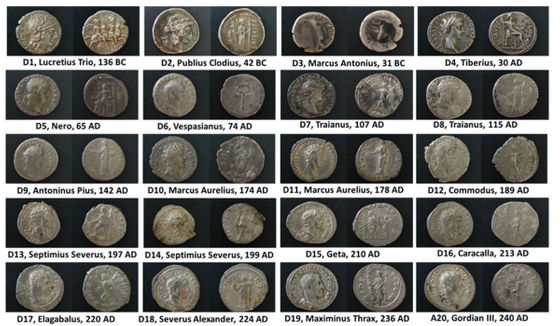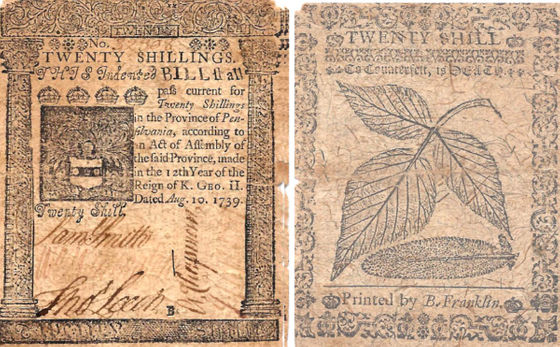'Tyrant Nero was surprisingly financially decent,' a study analyzing historical currencies with radiation revealed

A research team of nuclear physicists at Notre Dame University in the United States analyzes historic coins and banknotes using X-ray diffraction and particle accelerators at the presentation 'DNP 2021' held online in October 2021. We announced the results of our research. As a result, Roman emperor Nero, who has a strong image as a tyrant, was making efforts to maintain the currency value, and Benjamin Franklin, whose portrait is drawn on the US $ 100 bill, used it when issuing the bill. Countermeasures have been clarified.
Surface manipulation techniques of Roman denarii --ScienceDirect
https://www.sciencedirect.com/science/article/abs/pii/S0169433219320318
APS Physics | Nuclear Physicists Track Money Crimes From Ancient Rome to Benjamin Franklin
https://www.aps.org/newsroom/vpr/dnp/2021/20-09-2021-3.cfm
A physicist studied Ben Franklin's clever tricks to foil currency counterfeiters | Ars Technica
https://arstechnica.com/science/2021/11/history-detective-using-physics-to-track-currency-fraud-forgery-through-history/
Professor Michael Weescher of the University of Notre Dame's main specialty is astrophysics, which studies supernovae and X-ray bursts, but he makes full use of the latest nuclear physics technologies such as Raman spectrometers and transmission electron microscopes. He has a deep knowledge of cultural history research, which analyzes historical materials.
Professor Weisher's recent research focused on the Denarius silver coin, which was used as the key currency of the ancient Roman Empire. Professor Weisher and colleagues collected silver coins cast during the reign of various emperors and examined the proportion of silver and other impurities, and found that the silver content was between 250 and 350 AD. It turned out that there was a time when the silver content was only 5%.

In the Roman Empire, in order to raise military funds, the Roman Mint itself intentionally mixed silver coins to make a profit. In contrast, the currency of Nero's administration complied with the laws of the Roman Empire, which set a silver content of 92.5%, so Professor Weisher said, 'Nero is the most financially responsible Roman emperor of all time. He was one of the emperors who had. '
An ancient Roman merchant who knew that low-value silver coins mixed with copper were in circulation, said that he had chewed the silver coins with his teeth to check the taste of silver and to distinguish whether it was forged or not. It is said. However, Professor Weisher's research also found that counterfeiting techniques were used to circumvent this verification method.
According to Professor Weisher, if you put a coin that is a mixture of silver and copper into mercury, the silver will melt and collect on the surface of the coin. After that, if you heat the coin to remove mercury, copper will gather in the center and the surface will be covered with silver, so even if the proportion of silver is low, you can make coins that taste like silver.
Professor Weisher also revealed that the Spanish silver used in the first American silver coins cast in Boston in 1652 was mixed with copper and iron for hollowing out after being brought to the United States. .. According to Professor Weisher, Franklin, who was instrumental in eradicating these counterfeit currencies and popularizing banknotes, mixed mica powder from the back of his house with paper when printing banknotes.
Below is a 20 shilling note printed by Franklin in 1739.

Regarding Franklin's mixing of mica in banknotes, Professor Weisher said, 'The mica harvested behind Franklin's house has a unique shape, so making counterfeit notes would have been a difficult task.' Did.
Related Posts:
in Science, Posted by log1l_ks







